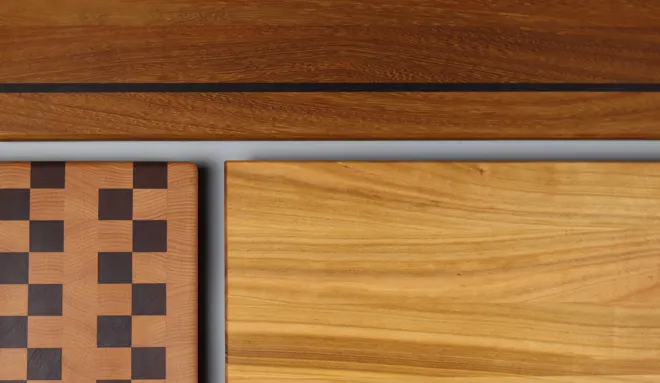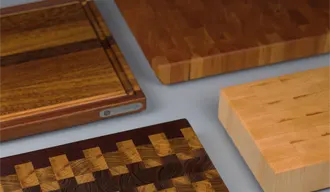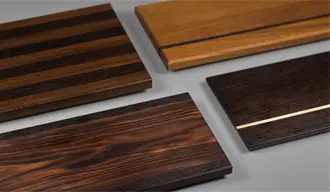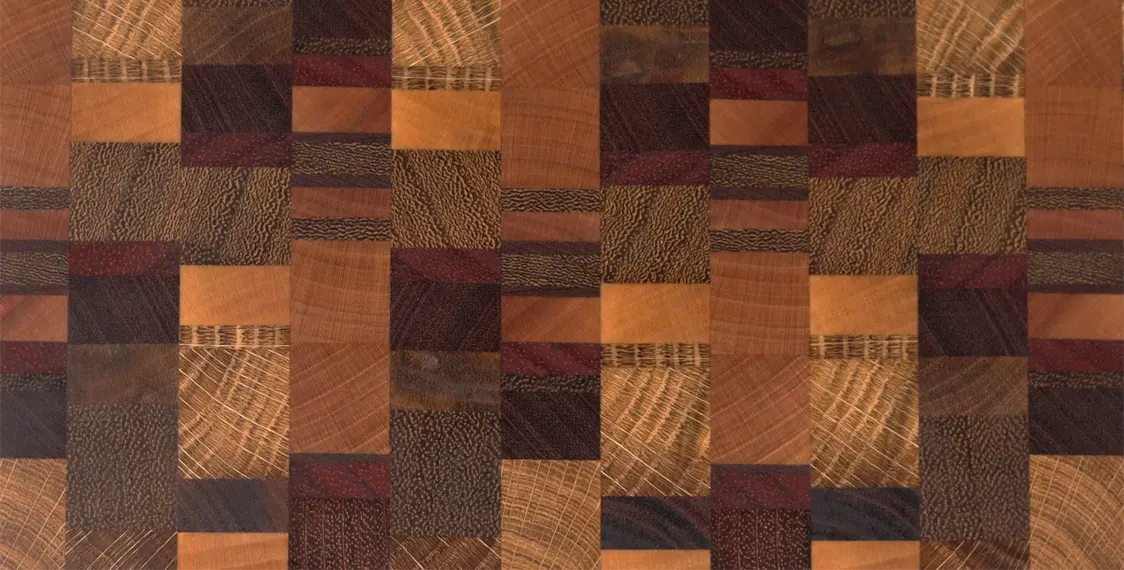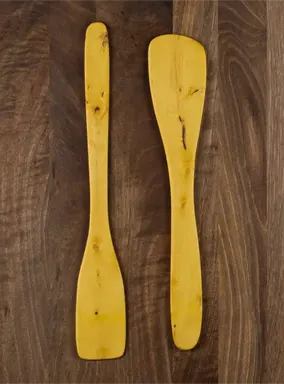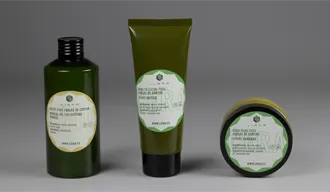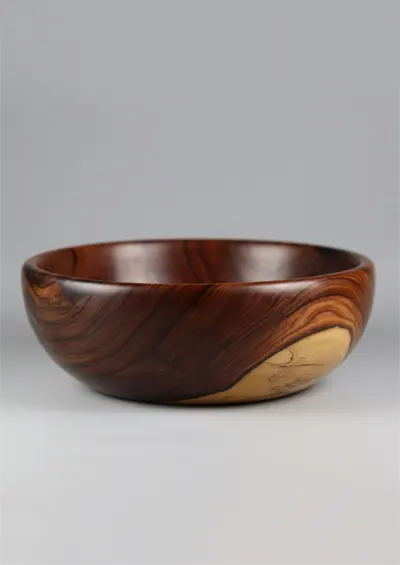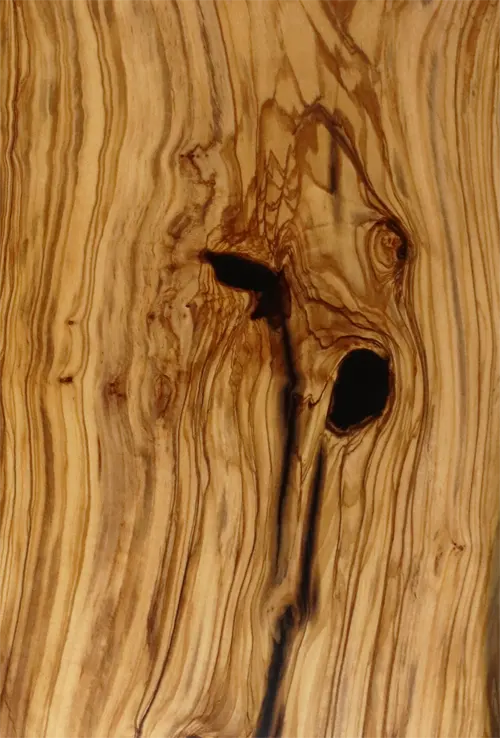Redwoods: Complete Guide
Woods with reddish tones have been appreciated for centuries for their beauty, durability and versatility. From high-end furniture manufacturing to musical instruments and decorative elements, red woods bring a distinctive and elegant touch to any project.
In this guide, we will explore the main species of redwoods used in cabinetmaking, their characteristics, applications and necessary care.
What are Red Woods?
Red woods are those that have shades that vary from intense red to softer shades such as reddish brown. These shades may be due to the presence of certain natural chemical compounds in wood, such as tannins, which also influence its durability and resistance to pests.
Main Redwood Species
1. Padouk (Pterocarpus soyauxii)
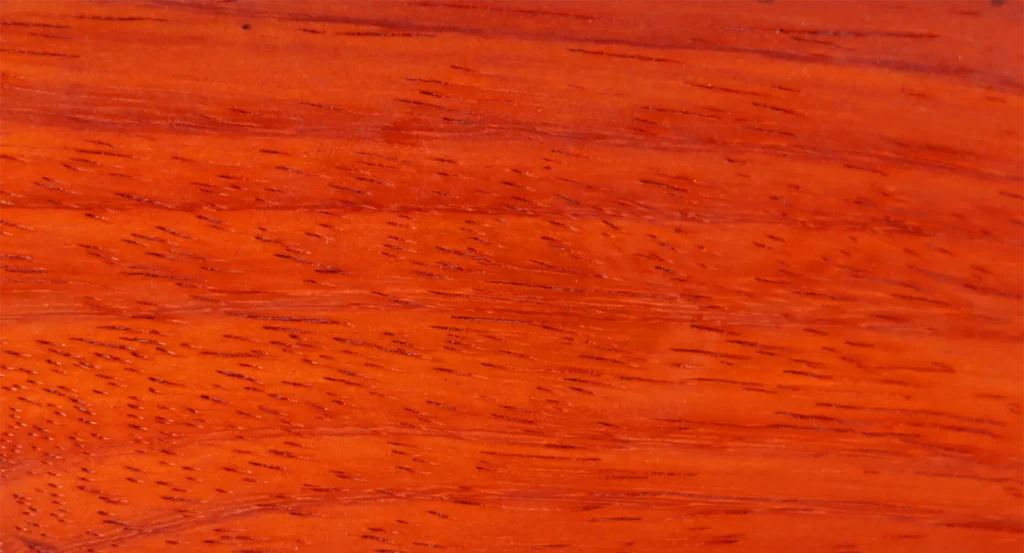
Padouk, also known as Palo Rojo or coral wood, is a tropical wood native to Africa, specifically countries such as Cameroon, Gabon, and Congo.
Its heartwood has a vibrant coral red color that, with time and exposure to air, darkens to purple or dark brown tones. It is a dense and hard wood, with a density that varies between 720 and 800 kg/m³, which gives it excellent resistance to wear and weather.
In addition, it is naturally resistant to insects and fungi, making it ideal for both indoor and outdoor applications.
It is commonly used in the manufacture of luxury furniture, musical instruments, and decorative items.
2. Mahogany (Swietenia macrophylla)
Mahogany is one of the most recognized and appreciated woods in the world of cabinetmaking.
Coming from Central and South America, there are several species, the best known being Swietenia macrophylla.
Its color varies from a light red to a deep reddish brown, and over time it tends to darken.
Mahogany is easy to work with, has a fine, uniform texture, and is resistant to moisture and pests. It is widely used in the manufacture of fine furniture, musical instruments, and interior woodworking.
3. Sapele (Entandrophragma cylindricum)
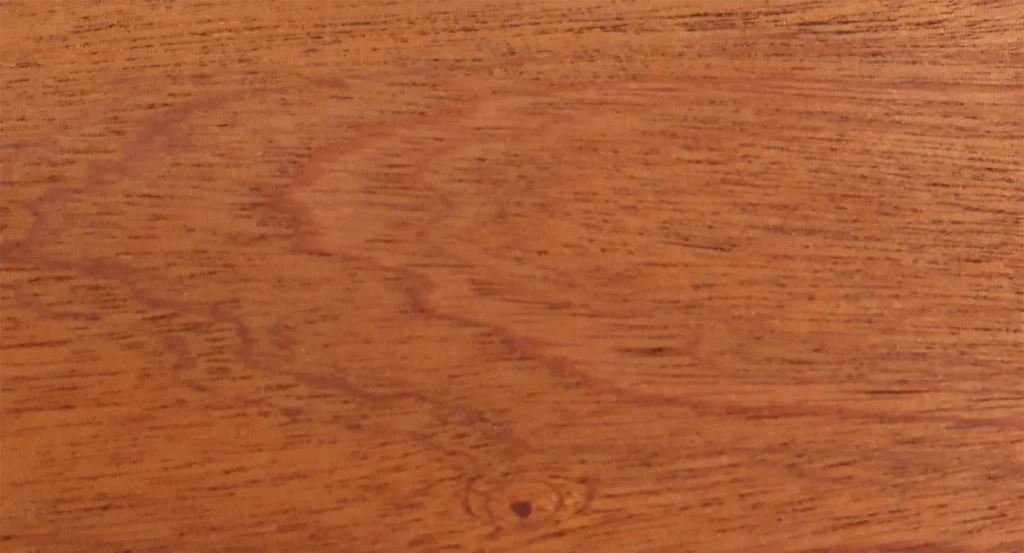
Sapele is an African wood that has shades ranging from reddish brown to golden.
It is known for its interlocking grain and natural shine, which makes it very attractive for decorative applications.
It has a medium-high density and is moderately resistant to humidity and pests.
It is used in the manufacture of furniture, decorative veneers and interior carpentry.
4. Red Cedar (Cedrela odorata)
Red Cedar, also known as Red Cedar, is a coniferous wood native to North America.
It has a color that varies from pale pink to dark red, with a characteristic aroma.
It is a light wood, with a density of approximately 370 kg/m³, and is naturally resistant to insects and decay.
It is commonly used in cladding, outdoor furniture, and decorative elements.
5. Palo Brasil (Paubrasilia echinata)
Palo Brasil, also known as Pernambuco, is a wood native to Brazil, famous for its deep red color and its use in the manufacture of bows for stringed instruments.
It is a very dense and hard wood, with excellent acoustic properties. Historically, it was also used as a source of red dye.
Due to overexploitation, its trade is regulated to protect the species.
6. Red Eucalyptus (Eucalyptus camaldulensis)
Red Grandis is a wood grown on plantations, which guarantees its sustainability. It has a medium texture and a straight grain, and is easy to work with. It is used in flooring, outdoor furniture, carpentry and cabinetmaking.
Color Changes in Redwoods Over Time
Prized for their vibrant hues, red woods undergo natural color changes as they age. This phenomenon is mainly due to two processes: oxidation and photodegradation.
Oxidation occurs when the chemical compounds present in the wood react with oxygen in the air, causing a gradual darkening of the original color. On the other hand, photodegradation is caused by exposure to ultraviolet (UV) light, which breaks down lignin molecules on the surface of the wood, leading to a loss of color and gloss.
As a result of these processes, woods such as Padouk (Pterocarpus soyauxii) and Mahogany (Swietenia macrophylla) can turn from deep red to dark brown tones over time. This change is a natural characteristic of wood and does not affect its structural integrity.
To minimize these effects and preserve the original color of the red woods, it is recommended:
- Apply UV protection finishes.
- Avoid direct and prolonged exposure to sunlight.
- Perform regular maintenance, including cleaning and reapplying protective finishes as needed.
Applications of Redwoods
Redwoods are used in a wide variety of applications due to their beauty and physical properties:
- Luxury furniture: Tables, chairs, cabinets and other furniture that seek to stand out for their aesthetics.
- Musical instruments: Guitars, violins, drums, and other instruments that require woods with good acoustic properties.
- Walls and floors: They bring warmth and elegance to interiors.
- Decorative elements: Plates, moldings and architectural details.
- Outdoor carpentry: Thanks to their natural resistance, some red woods are ideal for pergolas, terraces and garden furniture.
Color Changes in Redwoods Over Time
Prized for their vibrant hues, red woods undergo natural color changes as they age. This phenomenon is mainly due to two processes: oxidation and photodegradation.
Oxidation occurs when the chemical compounds present in the wood react with oxygen in the air, causing a gradual darkening of the original color.
On the other hand, photodegradation is caused by exposure to ultraviolet (UV) light, which breaks down lignin molecules on the surface of the wood, leading to a loss of color and gloss.
As a result of these processes, woods such as Padouk (Pterocarpus soyauxii) and Mahogany (Swietenia macrophylla) can turn from deep red to dark brown tones over time. This change is a natural characteristic of wood and does not affect its structural integrity.
FAQ: Frequently Asked Questions About Redwoods
Why do red woods change color over time?
Redwoods change color due to natural processes such as oxidation and photodegradation.
Oxidation involves the reaction of chemical compounds in wood with oxygen in the air, while photodegradation is caused by exposure to ultraviolet light, which breaks down lignin molecules on the surface of the wood.
How can I prevent red wood from losing its original color?
To preserve the original color of the red wood, it is recommended to apply UV-protective finishes, avoid direct and prolonged exposure to sunlight, and perform regular maintenance, including cleaning and reapplying protective finishes as needed.
Does the color change affect the quality or durability of the wood?
Color change is a surface process that does not affect the structural integrity or durability of the wood. It is a natural characteristic of wood aging.
Do all redwoods experience the same degree of color change?
No, the degree of color change varies depending on the wood species and exposure conditions. For example, Padouk can darken more quickly than other redwoods when exposed to direct sunlight.
Is it possible to restore the original color of red wood?
In some cases, it is possible to restore the original color through techniques such as sanding and the application of specific wood products. However, the success of the restoration depends on the degree of color change and the type of finish previously applied.
What finishes are most effective at protecting the color of redwood?
UV-protected finishes, such as certain exterior-specific varnishes and oils, are effective in protecting the color of red wood. It is important to select a suitable finish for the type of wood and the intended application.
Does humidity influence the color change of red wood?
Yes, moisture can accelerate the oxidation process and affect the appearance of wood. Maintaining stable and proper humidity levels helps preserve the color and integrity of the wood.
Is the color change more pronounced indoors or outdoors?
The color change is usually more pronounced outdoors due to increased exposure to sunlight and variable weather conditions. However, in interiors with high exposure to natural light, a significant change in the color of the wood can also occur.
Can the use of carpets or rugs affect the color change of red wood floors?
Yes, areas covered by carpets or rugs may maintain the original color of the wood, while exposed areas may darken over time, creating differences in hue. It is advisable to move the carpets periodically to achieve a more uniform aging.
Is redwood color change reversible?
Color change due to oxidation and photodegradation is generally irreversible. However, through restoration techniques and proper maintenance, it is possible to improve the appearance of the wood and get closer to its original color.
Otras entradas del blog
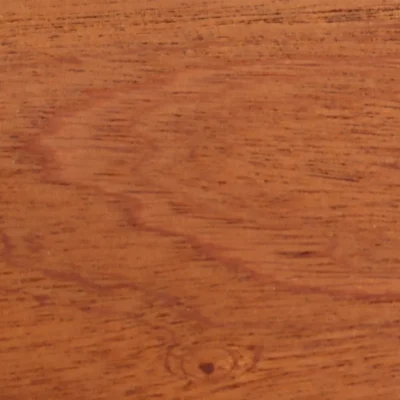
Sapele Wood: Uses and Characteristics
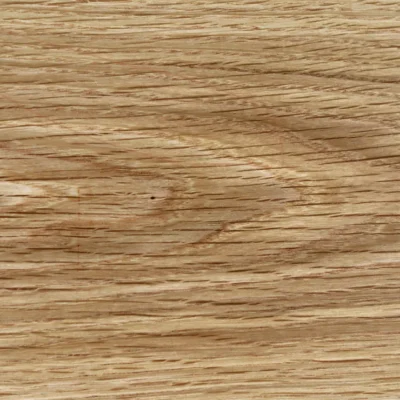
Oak Wood: Uses and Characteristics
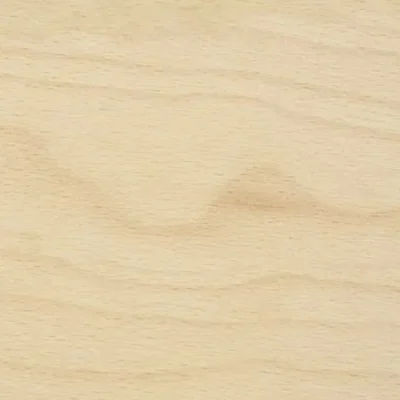
Birch Wood: Uses and Characteristics
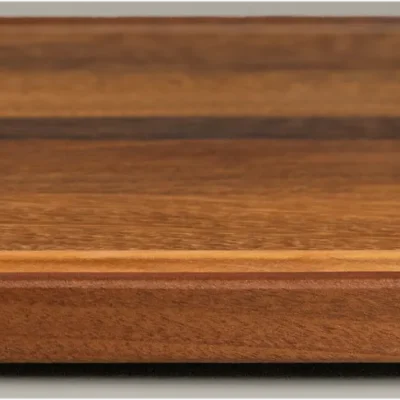
Meat cutting board: which wood to choose
Nuestras tablas de cortar:
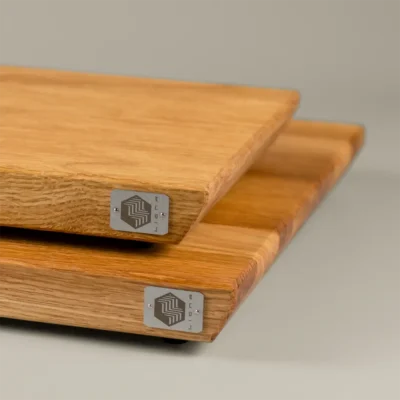
Linea
Oak oak cutting board
Linea
Oakoak cutting board
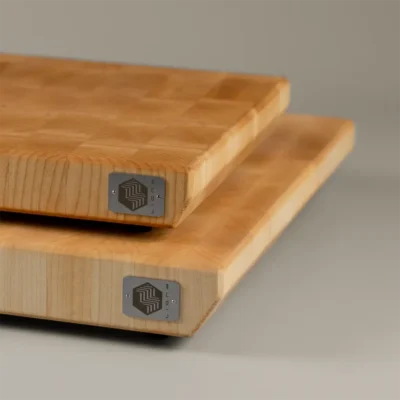
Pure
Maple maple butcher block
Pure
Maplemaple butcher block
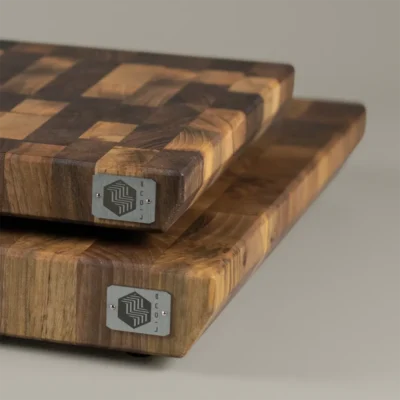
Pura
Walnut walnut butcher block
(copia)
Pura
Walnutwalnut butcher block
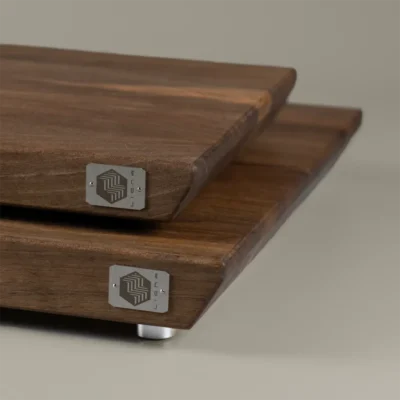
Linea
Walnut Walnut cutting board
Linea
WalnutWalnut cutting board
